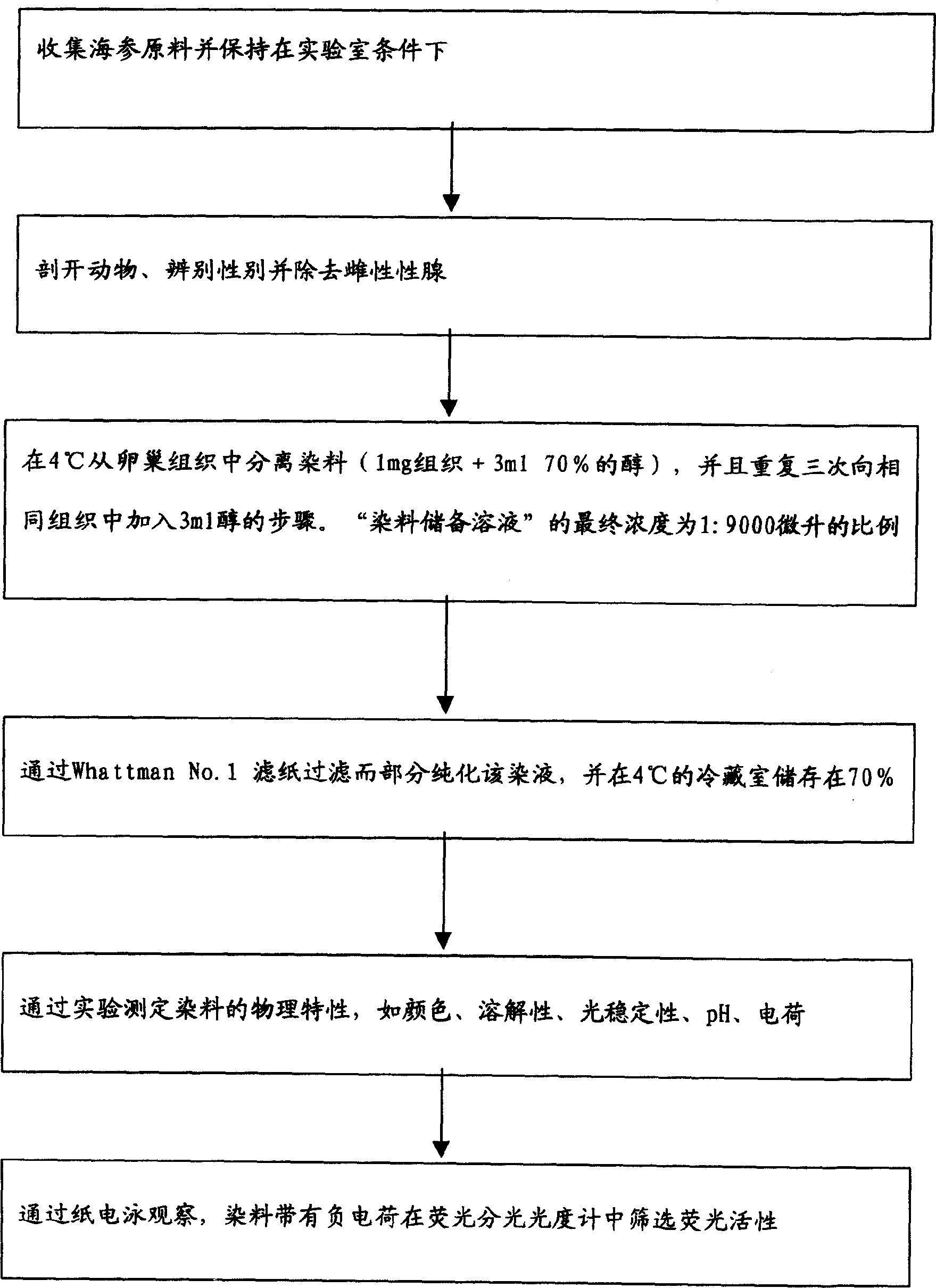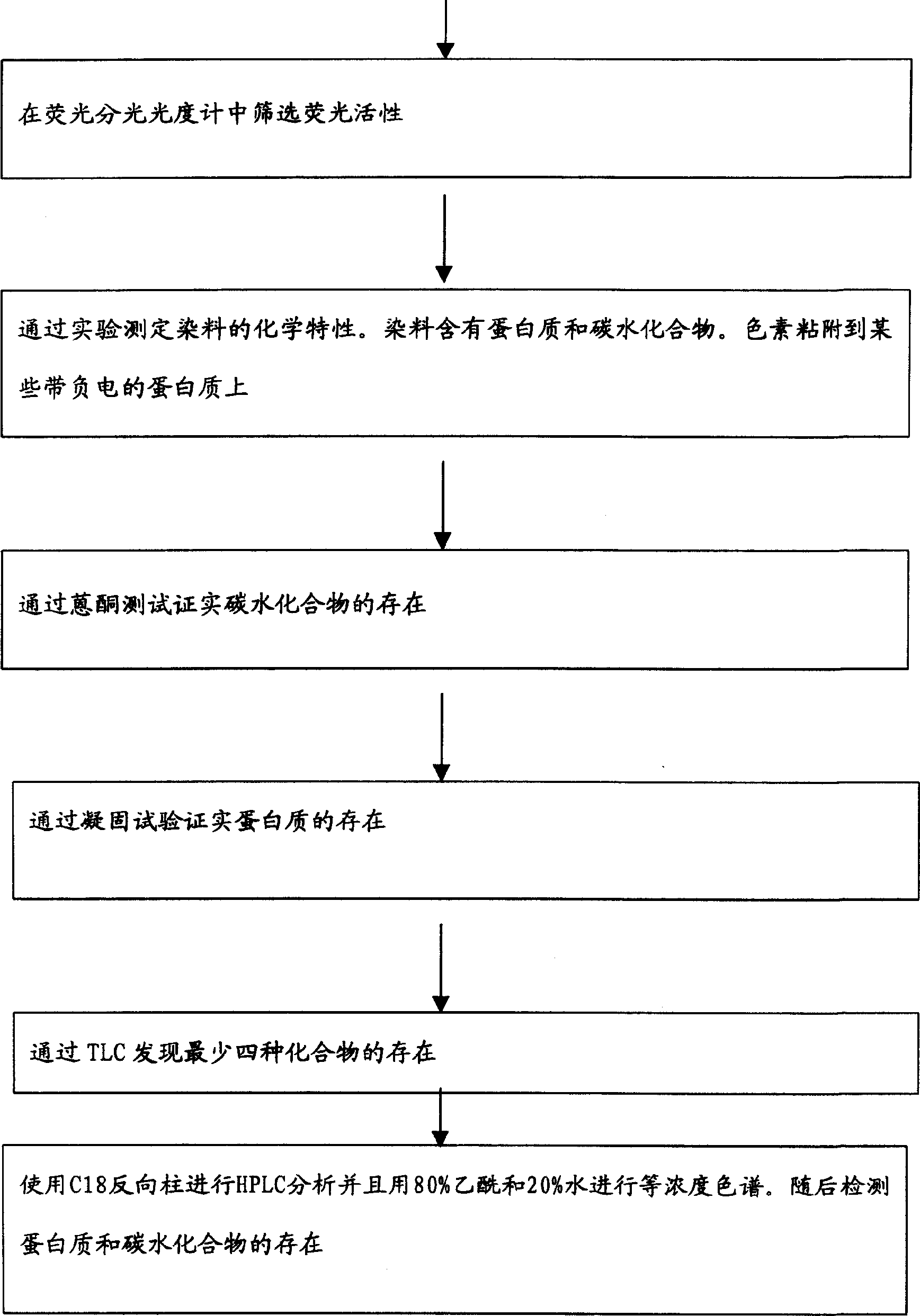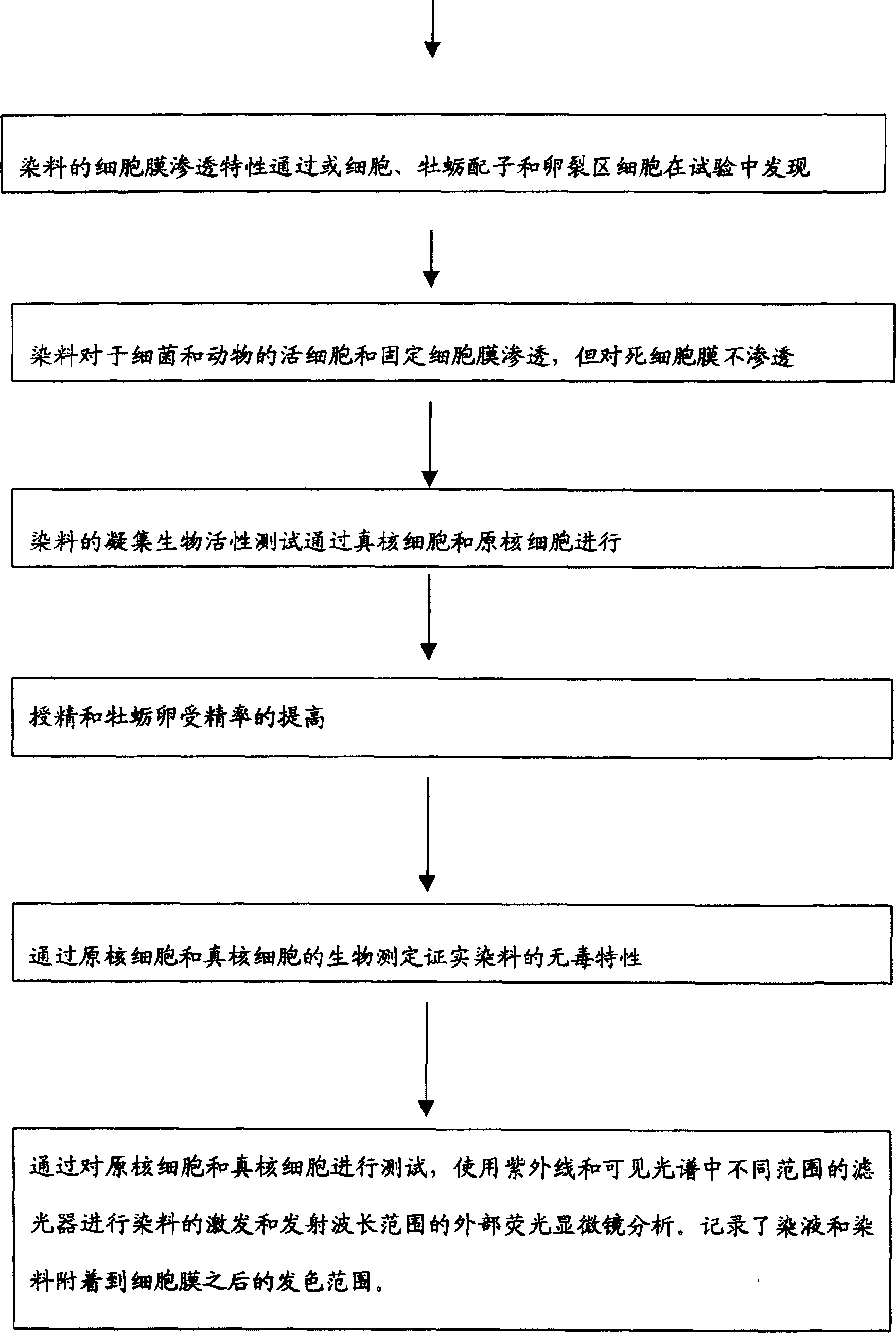A natural non-toxic fluorescent protein dye from a non-bioluminescent marine invertebrate, compositions containing the said dye and its uses
A technology of fluorescent dyes and compositions, applied in the field of natural non-toxic multicolor fluorescent protein dyes
- Summary
- Abstract
- Description
- Claims
- Application Information
AI Technical Summary
Problems solved by technology
Method used
Image
Examples
Embodiment 1
[0331] Embodiment 1: collect raw material
[0332] The material in this patent is sea cucumber and has the following taxonomic details
[0333] Subkingdom: Metazoa
[0334] Phylum: Echinodermata
[0335] Subphylum: Migratory Echinodermata
[0336] Class: sea cucumber class
[0337] Subclass: Aspidochrotacea
[0338] Order: Aspidochirota
[0339] Genus: Sea Cucumber
[0340] Species: Scabra
[0341] Material was collected from the west and central coast of India at low tide. Take it to the laboratory and place it in a glass jar filled with seawater with a salinity of 30-32 / par (30‰) before use.
Embodiment 2
[0343] Isolation of dyes from female gonads
[0344] Animals were washed first with tap water and then with ultrapure water. Carcasses were cut open with a quick shear, and male / female animals were sorted. The female gonads are identified and carefully removed from the evisceration. The color of the ovary varies from yellow to orange depending on how mature or semi-mature the ovary cells are. Weigh the ovarian tissue and place in a glass beaker. 70% ethanol was added in a ratio of 1:3 (weight to volume ratio). A yellowish-orange pigment appears. The colored solution was transferred to other containers. 70% ethanol was added again to the remaining tissue and the colored solution was removed. These steps were repeated three times to extract the pigment without homogenizing the ovarian tissue. Partial purification of the dye
[0345] The extract was partially purified by filtration through whattman No. 1 filter paper. The screw-cap vial containing the dye solution was la...
Embodiment 3
[0347] Example 3: Physical Properties of Dye Color and Solubility
[0348] The dye solution is pale yellow-orange in visual inspection. It produces a changing color emission under daylight / tube lighting. Dyes are insoluble in water but soluble in alcohol.
PUM
| Property | Measurement | Unit |
|---|---|---|
| length | aaaaa | aaaaa |
Abstract
Description
Claims
Application Information
 Login to View More
Login to View More - R&D
- Intellectual Property
- Life Sciences
- Materials
- Tech Scout
- Unparalleled Data Quality
- Higher Quality Content
- 60% Fewer Hallucinations
Browse by: Latest US Patents, China's latest patents, Technical Efficacy Thesaurus, Application Domain, Technology Topic, Popular Technical Reports.
© 2025 PatSnap. All rights reserved.Legal|Privacy policy|Modern Slavery Act Transparency Statement|Sitemap|About US| Contact US: help@patsnap.com



